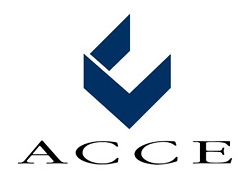Things have changed a lot recently as it comes to where and how people work. Telecommuting employees. Telecommuting employers. Unemployment issues. Reemployment issues.
Many companies/business owners who swore they’d never have a virtual office (including chambers!) have now been forced to reconsider. Non-essential employees have gotten a taste of working from home. Some love it and some wish to return to the office just to get away from the hectic pace and demands of home.
While employees can argue whether they’d rather work from home or the office, one thing that is evident:
The way we work right at this moment is going to impact employees, workers and employers for at least the next decade and most likely the future of work in general.

What Will Employers/Employees Face When Things Return to “Normal?”
While even the brightest minds in medicine and the economy don’t know exactly when “normal” will occur, most people are looking forward to it. However, it’s likely that no matter how long this epidemic lasts, our lives have been irrevocably changed.
Employers will discover that their employees are different people now then they were when the pandemic began. Businesses will need to change a lot of human resources protocols in order to remain an employer of choice.
Your chamber is in an ideal position to help them make that a reality. Here’s what you’ll need to consider:
Change #1: People got a taste of working from home and becoming telecommuting employees
Working from home became an order, not an exciting perk.
Because of that, it’s quickly becoming an expectation. For those who enjoy working from home, they now know it’s possible in their current position with their company.
In the past, a lot of employees heard excuses about why working from home was not a possibility. This time at home has proved those excuses were invalid for many organizations.

When things return to normal, telecommuting employees who enjoy working from home will either want to continue to do so with their current employer or if their employer won’t allow working from home, they will likely look elsewhere. That means they will either go to work for another employer who allows working from home or they’ll become part of the gig economy.
What the chamber can do to help/position itself as a resource: There are three things the chamber can do to help members retain telecommuting employees who enjoy working from home or help members looking for work-from-home options. These include:
- suggest to companies who offered working from home options during COVID that they continue a work from home option. Create a worksheet or other resource that can help your members decide if it makes economic sense for them to continue this perk.
- talk to companies to help them consider a flex time or partial work from home perk. This could be a single day, once a week, or once every two weeks. Or they could simply offer the ability to work from home for an afternoon or a morning.
- provide entrepreneurial lunch and learns to help those who are considering becoming part of the gig economy learn what they need to before taking on the challenge.
Change #2: Opting for financial security
When you go through difficult times financially, it’s human nature to consider what you will do in the future to avoid it from happening again. This will happen with COVID as well.
There seems to be a strict split in the employment structure right now. Employees are either doing very well because they are considered essential or they’re being forced to give up their business/their livelihood because the governing bodies consider their jobs nonessential.
It’s likely that some percentage of the nonessential employees will reevaluate their careers. They may decide they never want to face this kind of struggle again. So while many businesses are pivoting their offerings, there may be employees who are also pivoting on their skills.

The chamber solution: The chamber is in a unique position to help connect regular and telecommuting employees with new training opportunities. This could take the form of the chamber offering introductions to certain industries or creating partnerships with training programs that may help match employees looking to switch industries or careers.
These people will likely be driven by financial reasons and won’t necessarily know what they don’t know. If the chamber can help make suggestions and introductions to the right organizations, it could play a pivotal role in the employee’s new-found career and financial independence.
Change #3: Career burnout
Communities have done a lot to make first responders and essential employees feel appreciated. But kindness isn’t necessarily enough to help them avoid career burnout.
A lot of health care professionals and other people who have worked tirelessly during the virus may decide they want to leave their chosen profession. If they’ve spent their entire life in the industry they may not know how to take those skills and apply them to a new one.

The chamber solution: again, the chamber is an ideal position to help act as a convenor and make the introductions needed to help these individuals with the professional rebranding, training, and skill acquisition they may need for their new positions.
The chamber can also host a job expo to help connect those who are looking for positions and those who have some available. The expo could also be designed around “career change” and non-traditional career pathing like what some chambers have done for veterans re-entering the civilian workforce.
Change #4: Exodus
There are many reasons why your community may suffer an exodus of employees.
Obviously, this will happen if businesses close. But it could also happen if your universities and colleges remain online for some time. It’s not unusual for college grads to get positions in cities near where they went to school. This happens because students are more aware of the opportunities, may have worked as interns while they went to school, and may know people in the community who can help introduce them to employers.
With classes being held virtually, a large part of your population may no longer be in town. Some of them may get jobs in their own areas while they wait for campus to open up. They may also decide to go to a local community college and may not return. With classes online they can choose to go to school anywhere. So if they have a few credits to finish up it’s likely they won’t be back in less they really loved your community.
What can the chamber do: the chamber will obviously play a large role in helping to keep businesses afloat. You’ll help direct them to funding possibilities and organizations that can help them rebuild financially. You may also help some of these businesses look at new streams of revenue or other things that may be mutually beneficial to the community.
When it comes to the colleges and university populations, there’s a certain amount of marketing that the chamber will likely be involved with. You want to remind your students of why your town or area is a good place to live. You want to make sure they stay in touch so that you’re able to let them know about the job opportunities. The chamber may even want to consider a marketing or ad campaign on social media focused on matching new grads with employment opportunities in your town.
Introduce college students to your young professionals organization. While in-person events are important, they can still connect online right now. This year’s graduates may be feeling slightly lost right now. The chamber can easily provide some direction or connection to an organization that can help.

There are a lot of things that are changing due to our global pandemic. At some point, we will fully reopen again. But when we do, social distancing and added health precautions may still be in effect for a long time.
Employers may be hesitant to hire and employees may be reevaluating what they think is important in an employer. There are some companies that will come out of this as heroes because of their loyalty to their in-person and telecommuting employees. While there are others that will find it difficult to find people to work for them because of how they treated those who did.
While right now it’s likely the chamber is focused on helping to keep businesses open, at some point in the future you may find yourself in the role of employment matchmaker or trainer. How involved you get in those roles will likely depend on your strategic plan and your board.
But know that there are going to be a lot of opportunities for inserting the chamber into the valuable role of how you’ll get people back to work.
If nothing else, it’s nice to think about the possibilities of all you can be doing to shape the future economy and workforce.

